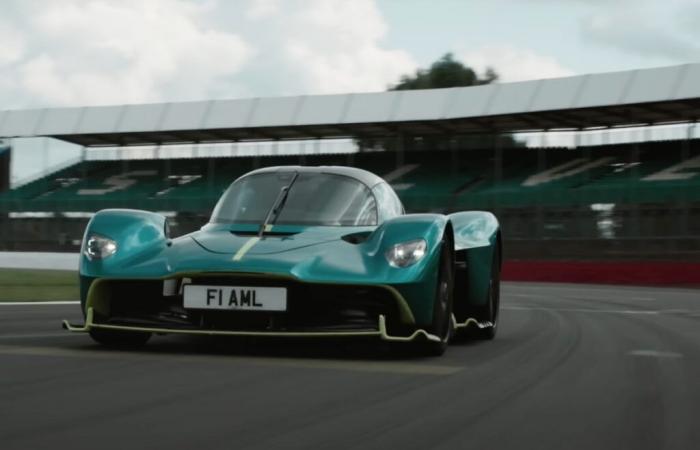
Earlier this month, the Aston Martin Valkyrie broke a record at Silverstone. By analyzing the video, we discover that it can go faster than an F1 car.
A few weeks ago, Aston Martin announced to us that its Valkyrie hypercar had taken to the Silverstone track. And that she had broken the lap record there. We believed the British manufacturer. But we wanted to see more than just a few clips from the tour. Now that the video is out, we know more.
The Valkyrie really faster than a Formula 1 car?
The Valkyrie has truly become the queen of Silverstone. But we wanted to see the Aston Martin hypercar travel the entire 5.9 kilometers of the Grand Prix circuit. If only to see how fast this extreme Aston Martin could go through each of the 18 corners at Silverstone. But also to hear its V12 engine sing.
Gaydon's firm eventually released the full video. We therefore see the complete tour of the car from start to finish. Looking at the images taken in the car, you realize how fast this racing car really is. Even if you can ignore the intensity of the noise through headphones, the rest of the experience is exceptional.
The cramped and minimalist interior, the pure vibrations of the engine and suspension that vibrate the camera… And the rear-view mirror cameras. All of this allows us to understand that this car is designed for one and only thing: to drive fast. Very quickly indeed. Precisely, by analyzing more precisely, we realize that it bears comparison with a real F1 single-seater.
F1 is ahead, but not everywhere
As in F1, the driver must touch the car's different modes to obtain maximum performance. You can see the driver Darren Turner press and hold the ERS button on the steering wheel. This allows him to get the most out of his Valkyrie's 160-horsepower engine and electric assistance.
This boost is in addition to the 1,000 horsepower coming from the naturally aspirated 6.5-liter Cosworth V12. Knowing when to deploy that extra energy and for how long is the key to a fast ride. Look at the steering wheel rather than the windows and you can really get a sense of how fast this car is on the track.
An F1 car travels at around 290 km/h (180 mph) through turn 2 at Silverstone. The Valkyrie accelerates and reaches a top speed of 143 mph, or 230 km/h. In low-speed corners, such as turn 4, an F1 car travels at around 60 mph (100 km/h). The Aston Martin Valkyrie is at 50 mph, or 80 km/h. But when it's time to accelerate again, the hypercar can hope to beat the F1 single-seaters.
Aston Martin F1 had better watch out
Crossing the radar at the end of the Hangar Straight, Aston Martin driver Lance Stroll achieved the second fastest speed with 325 km/h, or 202 mph. It was during this year's Grand Prix. Not bad, but the Valkyrie reached 205 mph, or 329 km/h! An astonishing figure for a car approved for the road. All in wet conditions… Far from optimal for setting a lap record.
The Valkyrie not only broke the lap record for a road car on the circuit. She pulverized him. The time of 1:56:42 is 10 seconds faster than the fastest road car that held the record. Of course, Lance's F1 Stroll is almost 30 seconds ahead of this one.
And that's quite normal given its breathtaking aerodynamics. It's difficult to compete with a single-seater from the premier category of motorsport. But you can take the Valkyrie to go to the restaurant. Which is not possible with Formula 1.





